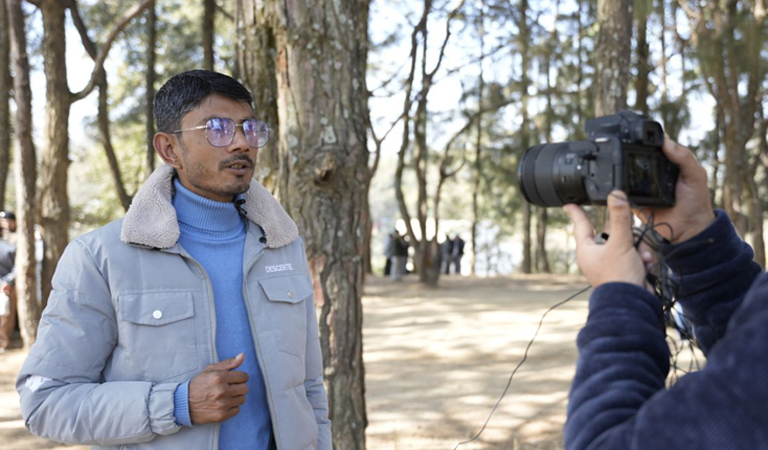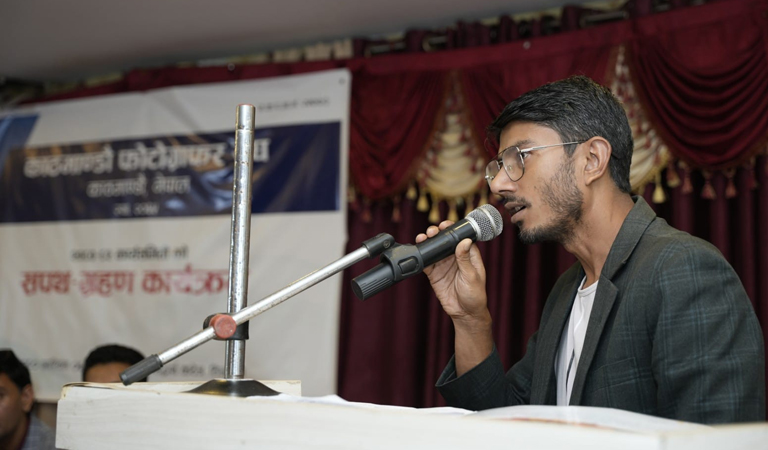Guide to Nepali Wedding Photography Success

Nepali Wedding Photography: Key Tips for Overcoming Challenges and Achieving Success
Nepali wedding photography has a history of over a century. During the Rana
era, wedding photography began in Nepal, with British and Indian photographers
being brought from regions like Bengal to capture weddings. Today, Nepali
wedding photography is immensely popular, and no wedding event feels complete
without photography services. Here are some essential tips for photographers to
succeed in wedding photography:
1. Thorough
Knowledge of Equipment To succeed in wedding photography, it's crucial
to have a thorough understanding of your camera, lenses, flash, and other
equipment. Knowing the specifics and functionalities of your gear will help you
capture exceptional photos in various situations. Good equipment alone is not enough;
proper use and maintenance are equally important.
2. Experience
in Composition A strong foundation in basic photography composition is
necessary. This includes framing, lighting, and angles, which enhance the
beauty and message of the photos. Practicing different composition techniques
will help you refine your photographic skills.
3. Gaining
Experience Working as an assistant to a professional wedding
photographer allows you to learn many aspects of the job. Gaining a few years
of experience helps you understand the wedding environment, client
expectations, and how to handle various challenges. It provides a deeper
understanding of photography in real-world scenarios.
4. Regular
Equipment Checks Before heading to a wedding, it's essential to check
all your equipment. Ensure your camera, lenses, flash, and other tools are in
good condition to avoid disruptions during the event. Regular maintenance of
your equipment ensures long-term performance.
5. Creating
a Checklist Prepare a checklist to capture every important moment of
the wedding. Include key moments of the bride and groom, specific family shots,
and other essential photos. This helps you avoid missing any crucial moments
amidst the hustle of the wedding.
6. Timely
Arrival Time management is crucial in wedding photography. Arrive at
the venue 30 minutes before the scheduled time to assess the location and
prepare. This helps you understand the setting and get ready for the event.
7. Identifying
Key Individuals Identifying and knowing the bride and groom's family and
friends is important during the wedding. This helps you capture better photos
of significant people. Spend some time familiarizing yourself with the family
and understanding their importance.
8. Utilizing
Natural Light Using natural light (source light) at weddings is ideal.
If natural light is insufficient, only then should you use flash. Natural light
adds a touch of realism and beauty to the photos, making them more vibrant.
9. Capturing
Emotional Moments It's important to capture the emotional moments of the
bride and groom. Photograph their expressions, smiles, and tears at the right
moment. This adds emotional depth to the photos.
10. Turning
Off the Shutter Noise To avoid unnecessary noise, keep the camera's
shutter in silent mode or use a quieter setting. This helps maintain the
clarity and quality of the images.
11. Shooting
in RAW Shooting in RAW format preserves the full data of the photos,
providing more flexibility during editing. It allows for better adjustments and
enhancements to the details of the images.
12. Understanding
Cultural Traditions Understanding the cultural traditions of the
wedding group or community is important. This knowledge helps you capture their
specific rituals and traditions accurately, adding cultural value and meaning
to the photos.
13. Photographing
Guests It’s good practice to request and photograph the guests when
they have free time, including them with the bride and groom. This helps
capture the important people at the wedding and makes their presence
significant.
14. Incorporating
Humor Capturing humorous moments during the wedding adds charm and
memorability to the photos. Humorous images reflect the joy and fun of the
event, showcasing the photographer’s creativity and maturity.
15. Background
and Setup Proper preparation of the background and setup significantly
affects photo quality. Keep the location clean and organized for shooting.
Avoid any elements or clutter in the background that could distract from the
main subject.
16. Communicating
with Clients Clear communication with clients is crucial. Understand
their expectations, preferences, and specific requests. This ensures that you
cater to their needs and guarantees their satisfaction with your work.
17. Editing
and Post-Processing Good knowledge of editing and post-processing is
essential. This enhances the images, making them more attractive and
professional. Pay attention to color adjustments, cropping, and retouching
during this process.
18. Investment
and Professionalism Investment and professionalism are vital in the
photography field. Invest in high-quality equipment and view your work from a
professional standpoint. This helps build client trust and ensures long-term
success.
By focusing on these aspects, you can overcome challenges and achieve excellence in wedding photography. These tips will guide you to success and help you satisfy your clients. If you find this information useful, please share it with others and offer your support.
Photographer Bikram Neupane





